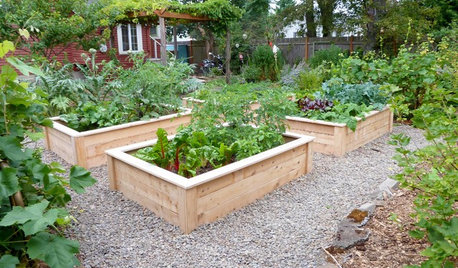Lawn in shambles--where to start?
whammytap
10 years ago
Related Stories

GARDENING GUIDES10 Tips to Start a Garden — Can-Do Ideas for Beginners
Green up your landscape even if you're short on time, money and knowledge, with these manageable steps for first-time gardeners
Full Story
GARDENING GUIDES12 Tips to Help You Start an Edible Garden
Get on your way to growing your own vegetables with a raised bed or a few containers on the patio
Full Story
DECORATING GUIDESDecorating 101: How to Start a Decorating Project
Before you grab that first paint chip, figure out your needs, your decorating style and what to get rid of
Full Story
GARDENING GUIDESHow to Stop Worrying and Start Loving Clay Soil
Clay has many more benefits than you might imagine
Full Story
FUN HOUZZ14 Things You Need to Start Doing Now for Your Spouse’s Sake
You have no idea how annoying your habits at home can be. We’re here to tell you
Full Story
GARDENING FOR BUTTERFLIESA Quick-Start Guide to Bird-Watching for Fun and Learning
Set out some seed and grab your field guide. Bird-watching is an easy, entertaining and educational activity for the whole family
Full Story
MOST POPULAR10 Things to Ask Your Contractor Before You Start Your Project
Ask these questions before signing with a contractor for better communication and fewer surprises along the way
Full Story
FARM YOUR YARD6 Things to Know Before You Start Growing Your Own Food
It takes time and practice, but growing edibles in the suburbs or city is possible with smart prep and patience
Full Story
HOUZZ TOURSHouzz Tour: A Texas Home Gets a Healthy, Fresh Start
Mold eradication was just the beginning for this Austin family's home on a creek bed — toxins of all kinds now don't make it past the door
Full Story
GARDENING GUIDESGet a Head Start on Planning Your Garden Even if It’s Snowing
Reviewing what you grew last year now will pay off when it’s time to head outside
Full StoryMore Discussions








dchall_san_antonio
whammytapOriginal Author
Related Professionals
Eden Prairie Landscape Architects & Landscape Designers · Palm Springs Landscape Architects & Landscape Designers · Severn Landscape Architects & Landscape Designers · Newcastle Landscape Architects & Landscape Designers · Azalea Park Landscape Contractors · Bridgeport Landscape Contractors · Huntley Landscape Contractors · Mastic Beach Landscape Contractors · Mount Sinai Landscape Contractors · Olympia Landscape Contractors · Quincy Landscape Contractors · West Covina Landscape Contractors · Wethersfield Landscape Contractors · Goodlettsville Swimming Pool Builders · Tucson Swimming Pool Buildersdchall_san_antonio
whammytapOriginal Author
whammytapOriginal Author
dchall_san_antonio
gardenper
hoovb zone 9 sunset 23
dchall_san_antonio
whammytapOriginal Author
whammytapOriginal Author
whammytapOriginal Author
whammytapOriginal Author
dchall_san_antonio
whammytapOriginal Author